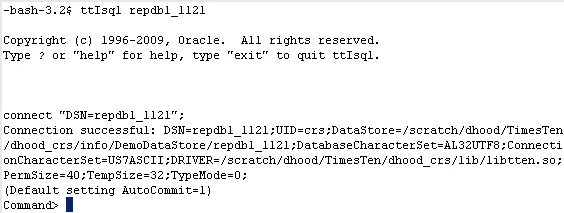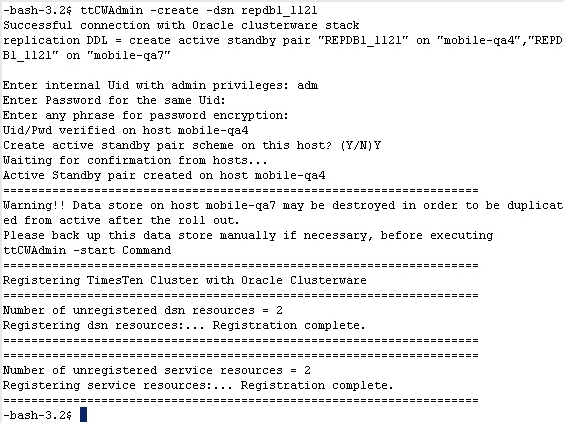| |
connect "dsn=repdb1_1121;uid=appuser";
CREATE TABLE CUSTOMERS (
CUST_NUMBER NUMBER,
FIRST_NAME VARCHAR2(12) NOT NULL,
LAST_NAME VARCHAR2(12) NOT NULL,
ADDRESS VARCHAR2(100) NOT NULL,
PRIMARY KEY (CUST_NUMBER));
insert into customers values (3700,'Peter','Burchard','882 Osborne Avenue, Boston, MA 02122');
insert into customers values (1121,'Saul','Mendoza','721 Stardust Street, Mountain View, CA 94043');
CREATE TABLE ORDERS (
ORDER_NUMBER NUMBER NOT NULL,
CUST_NUMBER NUMBER NOT NULL,
PROD_NUMBER CHAR(10) NOT NULL,
ORDER_DATE DATE NOT NULL,
PRIMARY KEY (ORDER_NUMBER),
FOREIGN KEY (CUST_NUMBER) REFERENCES CUSTOMERS (CUST_NUMBER));
insert into ORDERS values (6853036,3700,'0028616731',to_date('2008-04-05','yyyy-mm-dd'));
insert into ORDERS values (6853041,3700,'0198612710',to_date('2009-01-12','yyyy-mm-dd'));
insert into ORDERS values (6853169,1121,'0003750299',to_date('2008-08-01','yyyy-mm-dd'));
insert into ORDERS values (6853174,1121,'0789428741',to_date('2008-10-25','yyyy-mm-dd'));
insert into ORDERS values (6853179,1121,'0198612583',to_date('2009-02-02','yyyy-mm-dd')); |







